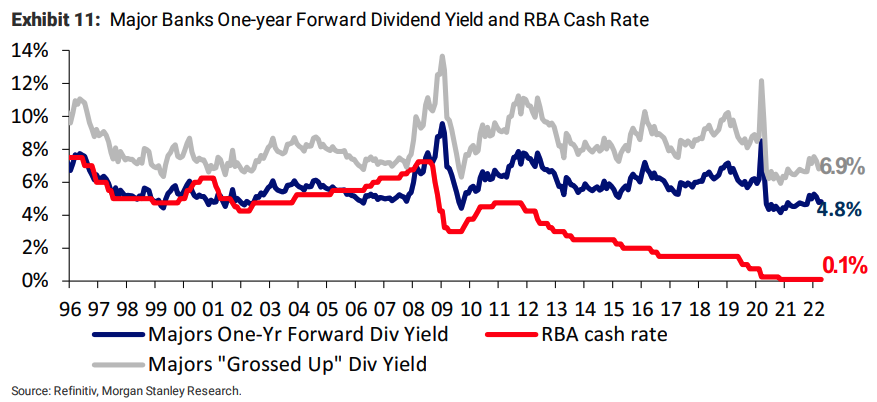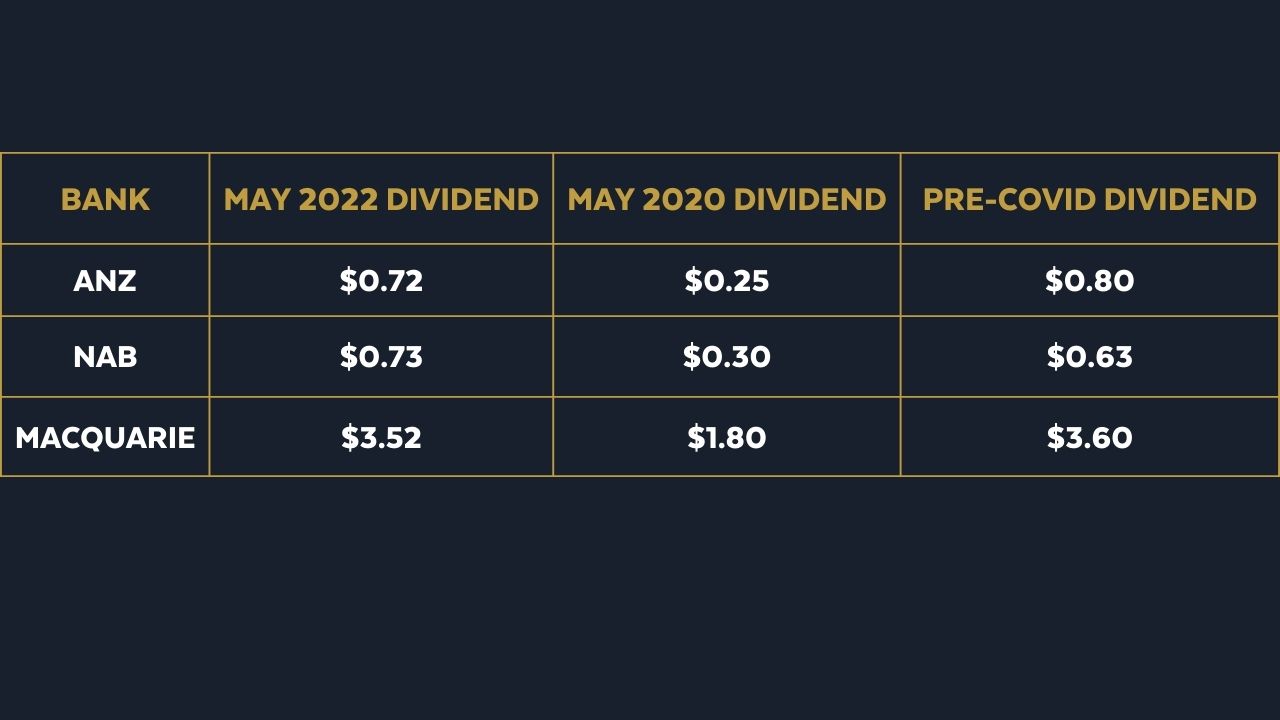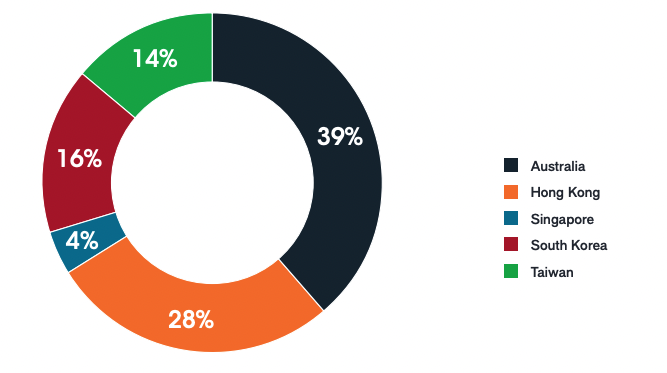Mortgages, margins, Macquarie: Wrapping big bank results week
The makeup of the Australian stock market is probably best summarised in a three-word phrase: houses and holes. Last month, the major miners handed down their quarterly updates, and this week, it's the turn of the major banks - namely ANZ, NAB, and Macquarie Group.
Note: Westpac reports early next week while the Commonwealth Bank reports in line with other ASX companies in the February and August cycles.
These numbers could not have come at a more interesting time with all of the Big Four (plus smaller counterparts) quickly passing on the full rate hike from the Reserve Bank.
In this wire, we take a look at some of what we have learned this week from the major names plus get some analysis from Hugh Dive of Atlas Funds Management.
The two M's: mortgages and margins
The two biggest problems for the big banks right now are in the M's - mortgages and margins. While earnings challenges should ease this year as higher interest rates kick in, that only helps margins. If you needed any proof of that, just read all the headlines about the big banks passing on rate hikes for your home loan.
Earlier this week, Morgan Stanley projected a looming opportunity on this front - but not for a while yet.
We believe that margin headwinds from lending competition and mix remained elevated in the March quarter, but will start to reduce in the June quarter as the impacts of the 2021 fixed rate mortgage price war ease.
On rate rises, that same note went back through the history books - finding bank P/E multiples have de-rated after the first rate hike in each of the four RBA tightening cycles over the past 30 years. The team believes a 'gradual and measured' cycle would be the best scenario for banks. But then again, let's see what Governor Lowe has to say about that.
Citi has a different view yet - saying the accelerating rate story in Australia will see the banks deliver further return on equity growth beyond FY24, before eventually moderating.
In the housing market, things are a little different. Moody's analysis has already noted mortgage arrears will increase if property prices fall and interest rate increases follow the forecasted steep trajectory which is being forecast. This will weigh on those bank balance sheets when push comes to shove.
The other significant pointer about this set of results is this quarter marks the return of international investors to the Australian property market for the first time since COVID-19. Will they come back in droves or will loan growth be left a little sour?
JP Morgan's man on the banks Andrew Triggs says competition will remain fierce - with those variable rates going up at some second-tier banks even in anticipation of the RBA's move on Tuesday.
But - this is the chart I suspect you will care the most deeply about if you're invested in the banks - the dividend yield.
Morgan Stanley notes the big banks are still "cheap" in comparison to the rest of the ASX, when compared against more subdued bond yields. Yet, even before the rate rises start, the one-year forward dividend yield was already falling. What might an RBA which actually raises rates do to that trajectory?

A tale of two valuations
ANZ’s first-half profit of $3.1 billion was no "belter" (as beautifully described by Nathan Zaia at Morningstar) but it was better than he and other analysts expected. Nathan's thesis is that ANZ is undervalued but that does hinge on higher cash rates allowing the bank to earn larger margins and management continuing to make investments into its home lending platform that will help stabilise market share.
The NAB is equally undervalued, in Nathan's view. But the NAB is different in that its focus is more aimed at SMEs rather than just pure play consumers. He notes that despite extremely low arrears, and customer balance sheets in good shape, the bank has kept provision balances at conservative settings. Given all the chatter around wage pressures, labour and supply chain challenges, and high inflation, he argues it's a reasonable approach.
Then, there is Macquarie
Macquarie Group (ASX:MQG) is the reason why we call the ASX banking sector the "Big Four + One". While the retail banks have struggled with slow mortgage loan growth and compressed net interest margins, Macquarie Group dished out a $3.50/share dividend in its full-year result.
Even more remarkable, profits increased by 56% year-on-year buoyed in large part by its asset management and commodities trading business. The latter of these saw revenues increase by 50 percent alone. And yes, they are still (for the 'nth time) "cautious" and maintaining a "conservative" approach to capital, funding, and liquidity.
Finally of note, Macquarie assets under management soared to $774 billion though that was in large part due to a whole range of acquisitions including AMP Capital's public investments business as well as stateside wealth manager Waddell & Reed.
Hugh Dive, Atlas Funds Management
Safety is the essence of Hugh's thesis.
"The bank dividend trade was very safe, as going into the results May results season, the risk of dividends being cut was very small," Hugh says.
At the depths of the pandemic, the banks either cut or suspended dividends and raised capital in anticipation of large loan losses from house prices falling by 20-30% and unemployment soaring in 2021 and 2022. Fast forward to said dates and the economic recovery has been absolutely remarkable.
The dividends have come along for the ride too - as this table shows.

On margins, Hugh reminds us that this is a 30+ year storyline. A history of falling interest rates and competition has been making things tough for a long time. But Hugh also argues that this could be the low point of what's been a very difficult run for the big kahunas.
"Increases in lending rates will be slow to flow as the banks reprice their loan book and fixed rate loans mature, but investors can expect NIM expansion in the second half of 2022," Hugh says.
So with all these tailwinds in place, where do you want to invest? Hugh's response is one of the most popular among professional investors.
Atlas' preferred bank exposure is Macquarie Bank which offers exposure to a global investment bank with a heavy weighting towards stable funds management earnings and will benefit from a falling AUD.
Unlike the major trading banks that operate in a competitive oligopoly where any moves to grow market share are swiftly matched by the other banks, Macquarie's growth is not constrained by Australian GDP growth.
Chart and context
If you've read my articles enough by now, you'll notice a pattern. I love charts (like really love them). This one is from Janus Henderson and its famous Global Dividend Index - but for ease, I've put Australian dividends in context with the rest of Asia ex-Japan.

It's no secret that COVID completely ruined company payouts - so much so that Australia actually joined France and the UK at the bottom of the
world rankings. This was also in large part due to APRA imposing regulatory constraints on the big banks distributing cash to shareholders. As those
payments were reinstated in 2021 – the banks regained their place, accounting for a third of the
headline increase.
But those dividends can only keep coming if cash earnings and net interest margins don't continue to be eaten away from neobanks and smaller competitors. It will be interesting to see how the story evolves from here - and in particular, how important the cash will be to shareholders should they need to reduce or withdraw payouts for whatever reason.
Never miss an insight
If you're not an existing Livewire subscriber you can sign up to get free access to investment ideas and strategies from Australia's leading investors.
I'll be in charge of asking the questions to Australia's best strategists, economists, and fixed income fund managers. If you have questions of your own, flick us an email: content@livewiremarkets.com
5 topics
3 stocks mentioned
1 contributor mentioned

